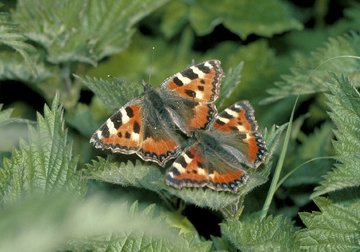Butterflies
Skippers
Whites
Hairstreaks
Blues and Coppers
Admirals
Vannesids
Fritillaries
Browns
Emergence
| Year | First | Last |
| 1976 | 2 Mar Orp | |
| 1977 | 19 Mar Orp | |
| 1978 | 5 Mar Orp | |
| 1979 | 21 Feb Orp | |
| 1980 | 4 Apl Orp | |
| 1981 | 1 Feb Orp | |
| 1982 | 5 Apl Orp | |
| 1983 | 4 Mar Orp | |
| 1984 | 7 Mar Orp | |
| 1985 | 11 Mar Orp | 25 Dec |
| 1986 | 7 Mar Bec | |
| 1987 | 9 Apl Ey | |
| 1988 | 22 Feb Orp | |
| 1989 | 27 Mar Ey | |
| 1990 | 22 Feb Ey | |
| 1991 | 13 Mar Ey | |
| 1992 | 21 Feb BIC | |
| 1993 | 14 Mar Ey | |
| 1994 | 10 Mar Ey | |
| 1995 | 4 Mar BIC | |
| 1996 | 5 Apl BIC | |
| 1997 | 15 Mar BIC | |
| 1998 | 13 Feb BIC | |
| 1999 | 17 Mar BIC | |
| 2000 | 19 Mar BIC | |
| 2001 | 2 Apl BIC | |
| 2002 | 24 Mar BIC | |
| 2003 | 24 Mar BC | |
| 2004 | 17 Mar BIC | |
| 2005 | 16 Mar BIC | |
| 2006 | 6 Apl BIC | |
| 2007 | 7 Mar BN | |
| 2008 | 15 Jun BIC | |
| 2009 | 22 Mar BIC | |
| 2010 | 9 Apl BIC | |
| 2011 | 18 Mar BIC |
|
| 2012 | 27 Mar BIC | |
| 2013 | 5 Mar BIC | |
| 2014 | Feb 24 BIC | |
| 2015 | Feb 17 BIC | |
| 2016 | ||
| 2017 | ||
| 2018 | ||
| 2019 | ||
| 2020 | ||
Submit Your Records & Comments Here
Aerial Maps of butterfly survey
Butterfly Survey 1976-2015
Nymphalidae
Small Tortoiseshell Aglais Urticea

Wingspan - 48 mm
This butterfly was the commonest in the UK, but was often misidentified by the lay public as a 'red admiral', which was, like the term sparrow, a sort of generic title for all orange or red butterflies. This smaller, brighter butterfly is a resident here in the UK and overwinters indoors as an imago emerging in spring - sometimes as early as January (2022) FB Butterflies of Kent.
This mating pair are overwintered butterflies showing signs of fading through long months on the wing and in hibernation. The summer brood is on the wing from early summer and can be found anywhere that nettles grow. In sharp decline, 2005-2009, now making a comeback, with the pattern of distribution shared with other species, deminished in our area.
There is in the old records, migratory movements of the small tortoiseshell from the near continent, probably Holland, which if now curtailed by recent agricultural practices, could account for its decline in Kent. The decline has also been linked to disease, but coincides with the adoption of energy saving home improvements - a preclusive measure to the butterfly's winter hibernation pattern. Aestivation is a feature of the butterfly in very hot summers.
Habit: formerly, widely distributed - could be seen in rough uncultivated pastures, in fields and gardens and along any margins where nettles grow.
Double brooded: In Spring and Summer - the larvae is typically spiny - chrysalis is white/grey and can often be seen suspended from old style window frames and old doorways - possibly where access is easy for the imago.
Larval Foodplant: stinging nettle - eggs laid in groups.
WH-White Hill, SH-Shoreham, BC-Bromley Common, Ha-Hayes, BN-Bromley North, Ey-Eynsford, Orp-Orpington (Ruxley), Lull-Lullingstone, HE-High Elms, BIC-Bickley, Bec- Beckenham
© Rodney Compton
